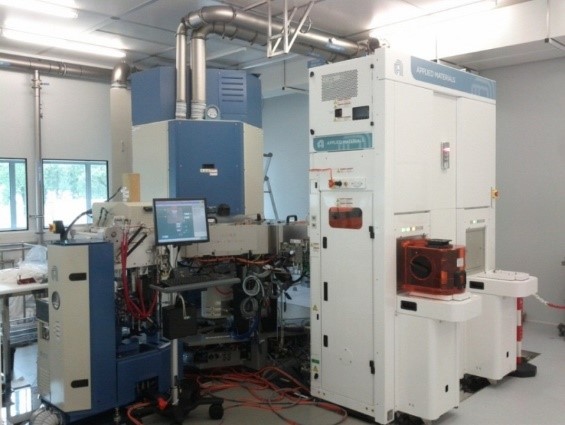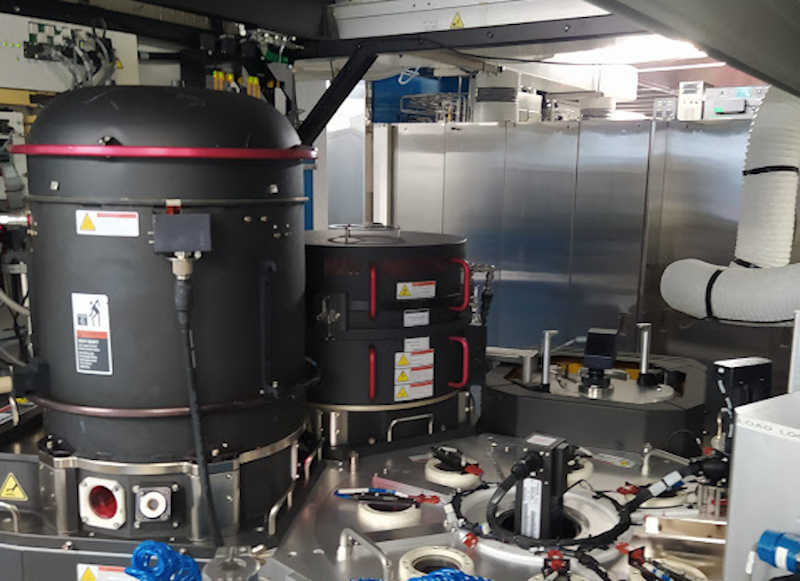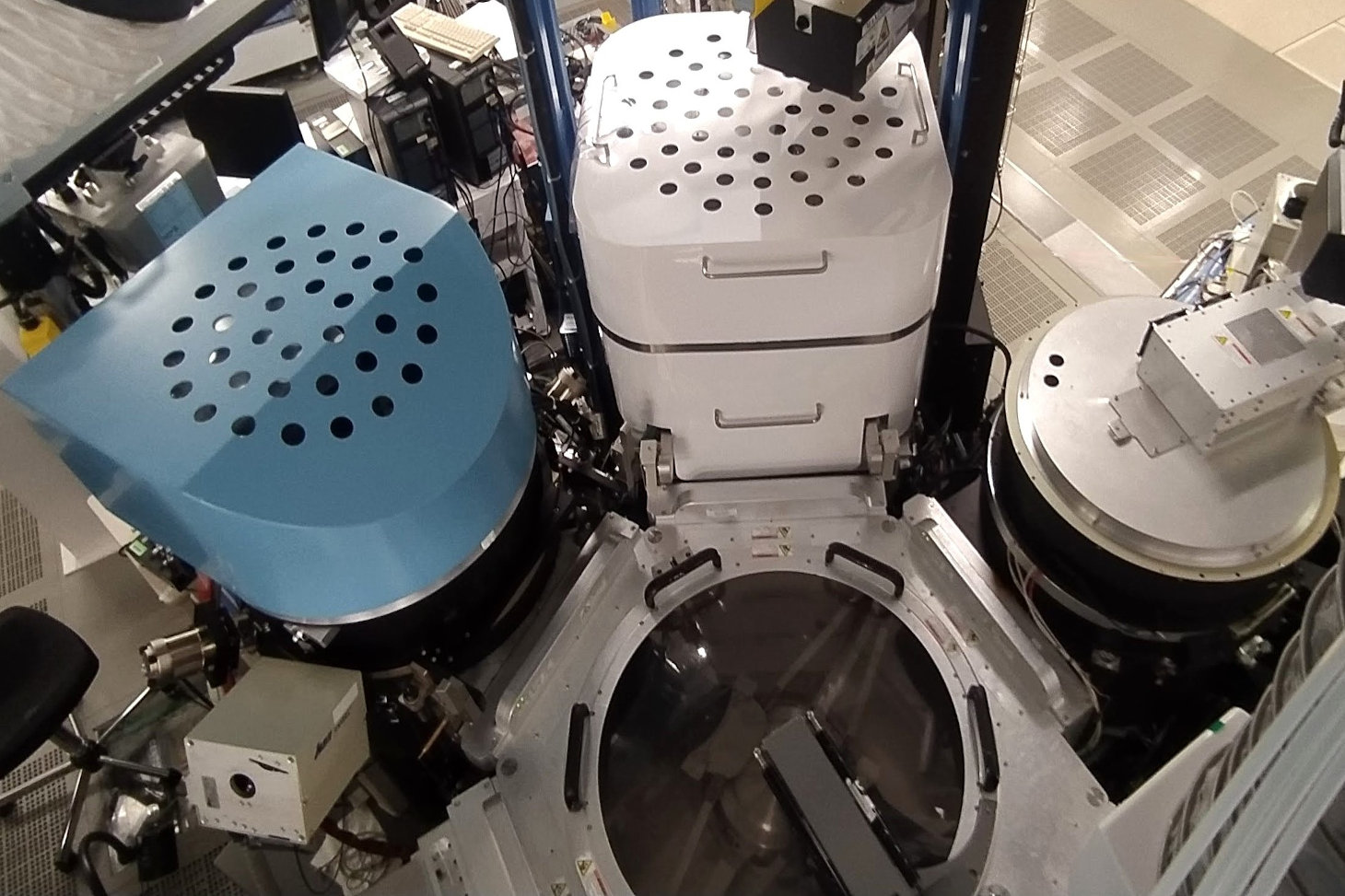- Share
- Share on Facebook
- Share on X
- Share on LinkedIn
LTM possesses some epitaxy and plasma tools tailored for processing large substrates, capable of accommodating diameters of up to 300 mm. These facilities are components of the PEGNA platform situated within the CEA-Leti 200/300mm clean room.
These platforms are constantly improving (hardware updates for better specifications, new connected process equipment), and the radiation of this project and its scientific activities are growing, both on academic and more industrial themes.
These platforms are open to users of the LTM, the CEA-Leti, the Federation for Micro and Nanotechnology (FMNT) and the national academic network of nanotechnology (Renatech), as well as within the framework of our academic collaborations.
Centura MOCVD III-V (Applied Materials)

AMAT Centura MOCVD III-V photo courtesy of LTM
This tool is dedicated to developing MOCVD growth processes for III-V and 2D materials on 200/300mm silicon wafers, targeting applications in electronics, photonics, and RF technology. It comprises four in-line modules:
- A MOCVD epitaxial chamber designed for the growth of III-V materials (such as arsenides, phosphides, and antimonides) alongside 2D chalcogenides.
- Two plasma chambers designed for the treatment and deoxidation of Si and Ge surfaces.
- A Pfeiffer/Adixen module facilitating the vacuum transport of epitaxial substrates to various characterization equipment within the IMPACT platform.
Etching equipments 200 and 300 mm (Applied Materials)
The 200mm etch platform consists of:
- Two Inductively Coupled Plasma (ICP) etch chambers, one of which with a hot cathode (150° to 250°C).
- A Magnetically Enclosed Capacitively Coupled Plasma (MERIE) etch chamber.
- A module with a Pfeiffer/Adixen case for transporting substrates under vacuum to the various characterisation tools on the IMPACT platform.

AMAT Centura 5200 photo courtesy of LTM
The 300 mm etch platform is equipped with five modules, including:
- An Inductive Coupled Plasma (ICP) reactor powered by two RF generators operating at 13.56 MHz integrating a pulsed plasma system which provides full pulsing capabilities at frequencies between 100 Hz and 20 kHz, with duty cycles between 10% and 90%. The system is capable of pulsing both source and/or bias independently or in a fully synchronized manner.
- A prototype reactor combining a Capacitively Coupled Plasma (CCP) chamber and a delocalised plasma chamber.
- A new ICP reactor (installation underway).
- A parallel angular XPS analysis chamber.
- A module with Pfeiffer/Adixen case.

AMAT Centura 300 photo courtesy of LTM
These two etching platforms have a threefold vocation to training through research (internships, theses, post-doctoral), academic interface (multidisciplinary research, Renatech network) and industrial (valorisation, collaboration agreement with Applied Materials, partnership with STMicroelectronics and CEA-Leti).
The specificities of this platform are the development and characterization of etching processes on an industrial platform integrating unique in situ characterization capabilities. The collaboration with Applied Materials has made it possible to modify the etching equipment in order to install a wide variety of in situ and quasi-in situ diagnostics to analyze the gas phase of the plasma (VUV absorption, mass spectrometry, ion flux probe, etc.) and plasma/surface interactions (real-time ellipsometry, XPS analysis chambers connected by a vacuum transfer chamber).
- Share
- Share on Facebook
- Share on X
- Share on LinkedIn